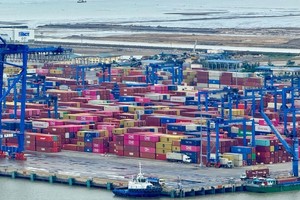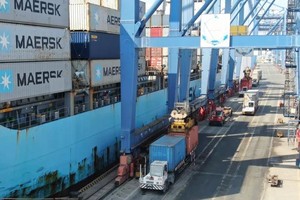Only half of the enterprises can survive and develop on the market after they register, according to the taskforce on supervising the implementation of the Enterprise and Investment Laws. Their recently released report on private economic sector operations reveals business difficulties.
The figures released annually by the Ministry of Planning and Investment showed that nearly 380,000 businesses had registered by December 31, 2008. With 83,000 businesses registered in 2009, the number had risen to 460,000 by December 2009.
If counting the number of registered businesses, businesses increased by 15 times within nine years from 31,000 in 2000 to 460,000 by the end of 2009. The growth rate in the number has been described as “impressive.”
According to the General Statistics Office’s figures released in 2009, however, Vietnam had had 178,852 non-state owned enterprises by December 31, 2008. These were businesses that had registered maintained their operations by that time. The total number of operational businesses in Vietnam at that point was 201,112.
General Taxation Department statistics demonstrated that, by the end of March 2009, Vietnam had had 272,680 non-state enterprises among 289,672 enterprises from different economic sectors.
As such, though the number of registered businesses is large, only 50 percent have continued to exist and develop. Difficulties have “killed” the other 50 percent.
However, economists have pointed out that 50 percent is a quite normal proportion seen in many countries, and that it does not mean that registered businesses have low quality.
According to the International Labour Organisation (ILO), the majority of enterprises are small and 25 percent of them are eliminated three years after registration. After five years, only 50 percent of registered businesses still survive, and only 30 percent continue to exist and develop after 10 years.
























